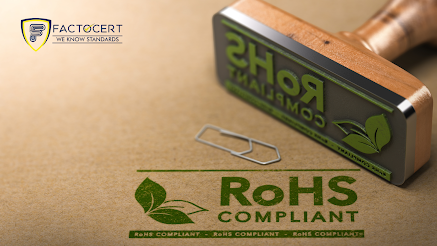What is RoHS Certification in Uganda
Restriction of Hazardous Substances, or RoHS Certification in Uganda, is the Directive 2002/95/EC. It bans certain dangerous substances from being used in Electrical and Electronic Equipment ).
Due to the growing demand for electronic devices in Uganda both the environment and the health of people are in danger. It's because it takes up a lot of energy by being used in electronic and electrical devices. It is the RoHS Directive is WEEE (Wmers throw away electronic devices in a hurry because of the rapid advancement of technology which has led to alarming rises in the volume of electronic garbage. In light of the negative impacts of electronic waste it was decided that the Ministry of Environment and Forest (MoEF) as well as The Government of Uganda implemented the Restriction of Hazardous Substances (RoHS), commonly referred to as electronic waste in Uganda.
Your Uganda legal entity as well as the type of device you are importing could impact your RoHS or WEEE obligations.
SUBSTANCES PROHIBITED UNDER ROHS CERTIFICATION IN UGANDA
- Polybrominated Diphenyl Ethers (PBDE)
- Polybrominated Biphenyls (PBB)
- Hexavalent Chromium (CrVI)
- Cadmium (Cd)
- Mercury (Hg)
- Lead (Pb)
EXEMPTED PRODUCTS UNDER ROHS CERTIFICATION IN UGANDA
- Products that are related to defense of the nation and military
- Products that's main source of energy isn't electricity
- products that do not require electricity to perform their primary purpose
- Exempted component or subassembly
- Manufacturing and service items that help micro, small medium, and large-sized companies, in accordance with the Micro, Small, and Medium-Sized Enterprises Development Act of 2006.
- Batteries
- Radioactive waste
PROCESS OF ROHS CERTIFICATION IN UGANDA
- Documentation Review Review and confirm the validity of the documents and the extent of the testing needed. The company's database is constantly updated with reviews of bills material declarations as well as test results as well as assembly drawings, conformance certifications and documents for compliance.
- Verification Testing is the primary stage of the RoHS certification process. On-site testing or XRF testing determines if the prohibited RoHS chemicals fall below the threshold.
- End Analysis of Product: The following stage is to conduct an on-site inspection of all manufacturing processes to ensure that the process is in compliance with RoHS. A thorough factory inspection , which incorporates quality management is an integral an essential part of the auditing process which involves a check of the product against the regulations for prohibited substances. To ensure compliance, certain auditing companies conduct periodic follow-ups that may include sampling.
- License Grant: Upon the successful completion of the audit the RoHS Certificate is awarded (also known as an Certificate of Conformity or Declaration of Conformity).
TECHNICAL FILE REQUIREMENTS
- Description Design, features, and other aspects in the item
- Information on the conformity of parts, materials and subassemblies
- Information on production processes and the structure records
- Risk assessments of performance risk for components, materials and subassemblies
- Standards, standards, as well as protocols are in alignment
Timeline
2 Weeks
Renewal
The RoHS directive is in force up to five years. After that, it's obligatory to recertify a product in the event of a change like design changes or changes to raw materials, or changes in sourcing.
For More Information Visit: RoHS Certification in Uganda.

.png)

Comments
Post a Comment